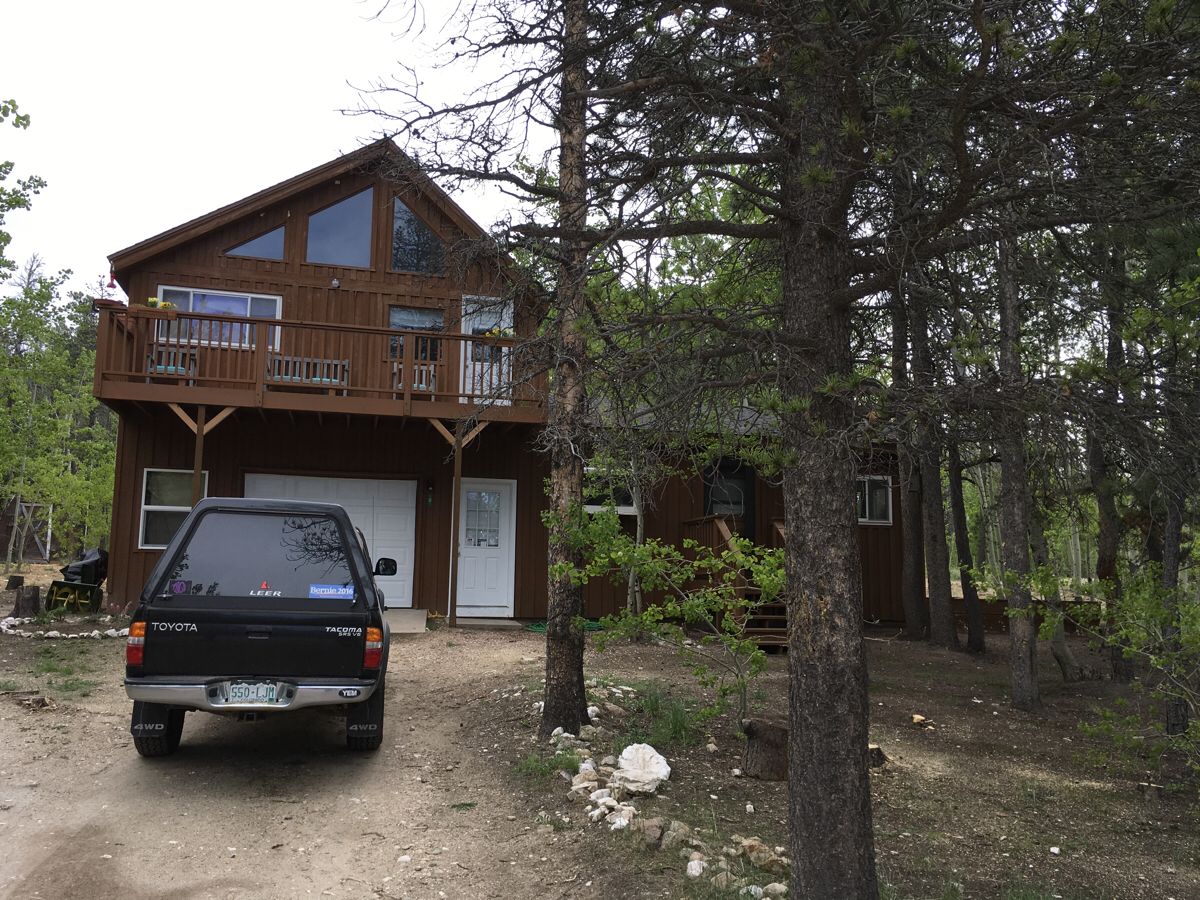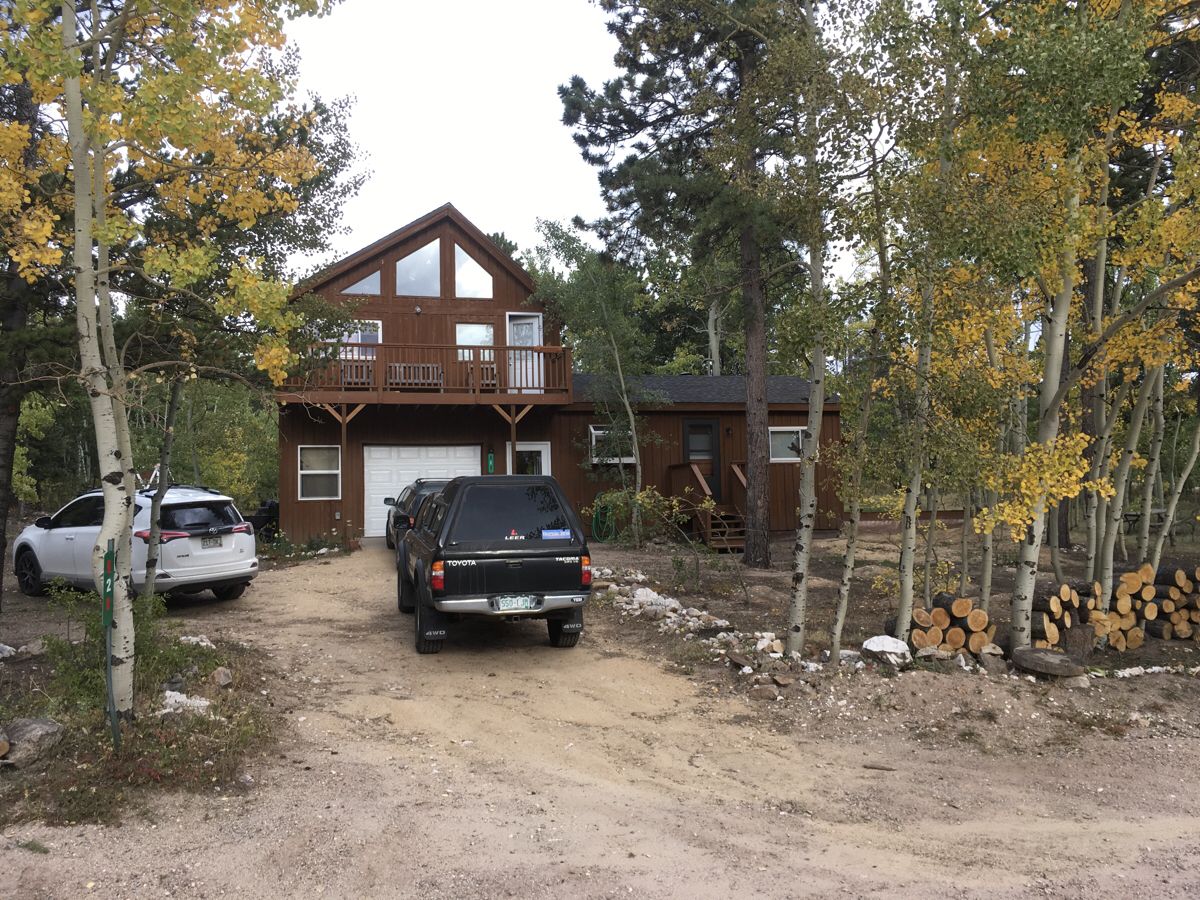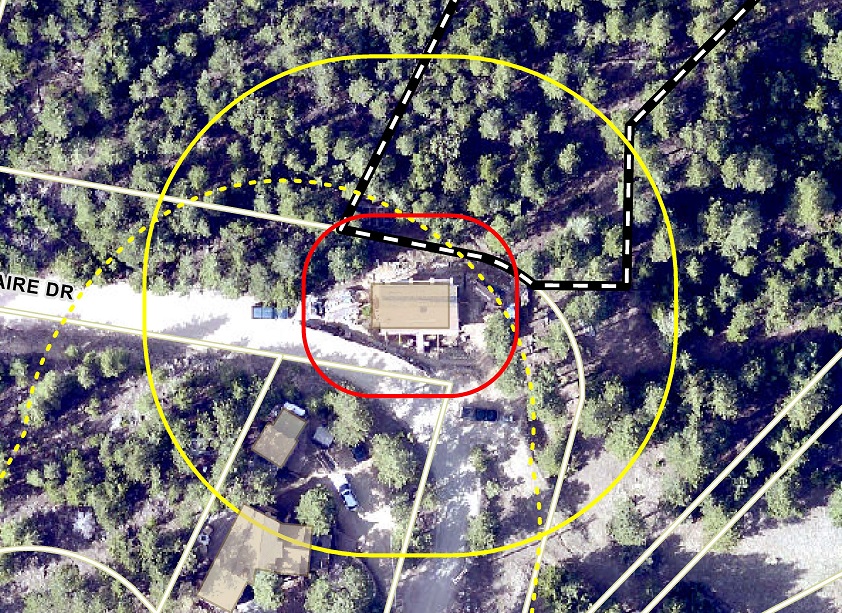Q: Why should I prepare for a wildfire?
A: The risk of catastrophic wildfire is a real and serious threat.
In many areas, it is not a question of if a wildfire will impact your home, but when. Living in the Wildland Urban Interface (WUI) comes with new responsibilities and challenges. According to a 2018 Colorado State Forest Service report, 2.9 million people in Colorado are living in areas at risk for wildfire.
We have the opportunity to significantly reduce the potential for property destruction in the WUI, but this opportunity depends on you. By creating and maintaining effective defensible space and retrofitting your home with safer materials, you can make your community safer.
A well-mitigated home gives firefighters the opportunity to do their job more safely. Firefighters will not risk their lives to defend a home that does not have defensible space. Even if firefighters are unable to directly protect your home during a wildfire, implementing effective wildfire mitigation will still increase your home’s chances for survival.
Q: What is wildfire mitigation?
A. Wildfire mitigation is the implementation of various measures designed to minimize the destructive effects a wildfire has on your property.
Some actions are designed to modify the forest environment around your home that puts it at risk from destruction by a wildfire. Others focus on “hardening” your home to improve its ability to withstand a wildfire without being dependent upon fire suppression resources. Wildfire mitigation increases the chances your home will survive a wildfire. It does not guarantee that it will survive.
Q: How much does the assessment cost?
A. It is free for homeowners new to our program. Re-certification assessments are also free.
Q: Will you make me clear cut my property?
A. Your Wildfire Mitigation Specialist will help you develop a wildfire mitigation forestry plan to enhance the overall health of your forest and land, which is not the same as clear cutting.
A properly mitigated home will usually have clumps of trees, openings and isolated individual trees. Our specialists will work with homeowners to preserve high value trees and other vegetation if possible.
The objective of tree thinning is to reduce the amount of radiant heat your home is exposed to during a wildfire and to prevent direct flames from touching your home’s walls and windows.
The goal is to break up forest continuity by creating large openings and separation between trees in an attempt to change fire behavior. Proper crown separation can help change an intense crown fire (a wildfire burning in the tree tops) into a less threatening ground fire. It is much more likely for a home to survive if the fire approaches from the ground.
Most homeowners find their property to be more aesthetically pleasing after implementing their forestry plan. Views are improved, and aspen trees and wildflowers are more abundant. The forest around your home becomes more diverse.
Q: How far out does defensible space extend from our house?
A. Defensible space is usually categorized by zones.
For the purpose of the Wildfire Partners program, we look at Zones 1a, 1 and 2. Zone 1a is the first 3-5 feet right around the foundation of your home. Zone 1 extends 30 feet out from your home, and Zone 2 is up to 100 feet out.
Mitigation specialists may extend Zone 2 if the topography (i.e., steep slopes) requires it.
Q: What financial assistance does Wildfire Partners provide?
A. Wildfire Partners can provide two types of financial assistance.
Standard awards and need-based assistance are both available to applicants. Standard awards are 50% of Wildfire Partners Forestry Contractor costs up to $2,000, whichever is less.
Need-based assistance is available to those on limited incomes to cover additional costs beyond $2000. If you have previously qualified for a government program that uses formal income criteria for acceptance, there is a good chance you will qualify for need-based assistance from Wildfire Partners. If you can formally document your need, then you should check “Yes” for the Additional Financial Assistance question and apply here.
Q: What if I want to do the work myself or hire someone who is not on the most recent Wildfire Partners Forestry Contractors List?
A. You are not required to use our forestry contractors. Homeowners are free to do all the work themselves or part of the work themselves.
Many homeowners choose to do all the required work themselves. How you do the work has no bearing upon your ability to get certified as long as you complete the Required Items on the checklist.
You also have the option to do some of the work yourself and hire a forestry contractor for the rest. You should do the work yourself, before getting a bid from a forestry contractor. Contractors are not allowed to give piece meal bids.
If you hire someone who is not on our approved forestry contractor list, you are not eligible for financial awards through Wildfire Partners.
Q: How do I dispose of my cut trees or limbs?
A. It depends on whether you are using a forestry contractor or doing the work yourself.
If your hire a forestry contractor, they are responsible for disposal of your slash and wood. To keep some wood for personal use, let them know ahead of time.
If you do the work yourself, there are options for getting rid of the slash and wood. Many homeowners like to keep cut logs to use for firewood or make it available to neighbors. Slash — trees and limbs less than 6 inches in diameter – may be chipped through our free curbside chipping program or taken to the county sort yard. The county also issues burn permits that can be used in the winter when conditions allow.
Sort yards are located in Nederland and Allenspark and are open May – October. Many neighborhoods also participate in curbside chipping programs that will chip slash located along the roadside. Contact your local fire protection district for more information about chipping programs.
Q: What are the wildfire mitigation requirements for Short Term Rentals?
A. You are required to have a Wildfire Partners assessment and/or certificate depending on what type of Short Term Rental license you apply for.
More information click here: Boulder County short-term dwelling and vacation rental licensing.
Q: If I received a home assessment in the past, do I need another one?
A. While we do not require another assessment, many homeowners find it helpful to get a re-certification assessment after two years.
If you’ve had a home assessment by a Wildfire Partner Mitigation Specialist, then you already have a solid understanding of how to prepare your home. However, mitigation is an ongoing process, so many homeowners do find it helpful to get a re-certification after two years. Call or email us if you would like to set up a re-certification assessment.
Ongoing research gives us a clearer picture of how and why homes are lost in fires. Researchers from across the nation are working in labs, studying the characteristics of embers, testing building materials, and investigating home loss in the field after major wildfires. They are making exciting breakthroughs on the specifics of why some homes survive and others are lost during fires.
As we become aware of new information on mitigation, we incorporate that into our home assessments. We also provide information about research through our Facebook, Twitter and Instagram pages.
Q: What am I required to do to become certified as a Wildfire Partner?
A: To become certified as a Wildfire Partner, you must implement the required actions identified in your customized wildfire mitigation assessment report.
One of our professional Wildfire Mitigation Specialists will visit your home and work with you to identify precisely what you need to do. You will receive a comprehensive report including a checklist of items required or recommended for you to complete. The report will provide specific comments on what you will need to do. These actions include changes to the exterior of your home as well as forestry work around your home up to 150 feet out. (View Wildfire Partners Sample Assessment Report 1 or Sample Assessment Report 2.)
Once you have completed the required actions, call us to schedule your final inspection. Upon passing, you will receive certification.
Q: How much time do I have to complete required actions?
A. There is no deadline for completing the required items on your mitigation checklist. Some homeowners finish the year they get their assessment, others take longer.
Everyone’s home construction and forest density is different and will require varying levels of mitigation. Some homes will require a lot of work that could take several months or even years to complete; others may only need some minor yard work.
However, your financial award for forestry work will expire. The expiration date is on the front page of your assessment report. Receiving the financial award is contingent on using one of our approved forestry contractors and completion by the deadline.
Q: What changes will I need to make to my home?
A. Your Wildfire Mitigation Specialist will work with you to identify the vulnerabilities in your home’s construction and provide you solutions.
The topography, building materials and other factors influence your home’s vulnerability to ignition. Sometimes, simple actions such as caulking or adding flashing can mitigate risk. Installing a noncombustible barrier around the foundation is required. Every home differs, so the actions needed will vary.
Q: Can I get a tax break for doing wildfire mitigation work?
A. You can get a tax subtraction from your Colorado state taxes for mitigation work.
You will need to submit your receipts for materials or labor to receive the tax subtraction. The subtraction is limited to $2,500.
Q: Will getting certified help me with my insurance needs?
A. Yes, receiving a Wildfire Partners certificate will increase your chances of obtaining insurance and staying insured; however, it will not qualify you for an insurance discount.
Since 2014, hundreds of homeowners have used Wildfire Partners program participation and certification to help attain insurance. Allstate, State Farm (existing customers), and USAA accept the Wildfire Partners certificate as proof of proper fire mitigation depending on the date of certificate. Certification will help you with your insurance needs, but it does not guarantee your policy will be automatically renewed every year or that a new insurance carrier will automatically agree to insure your home.



